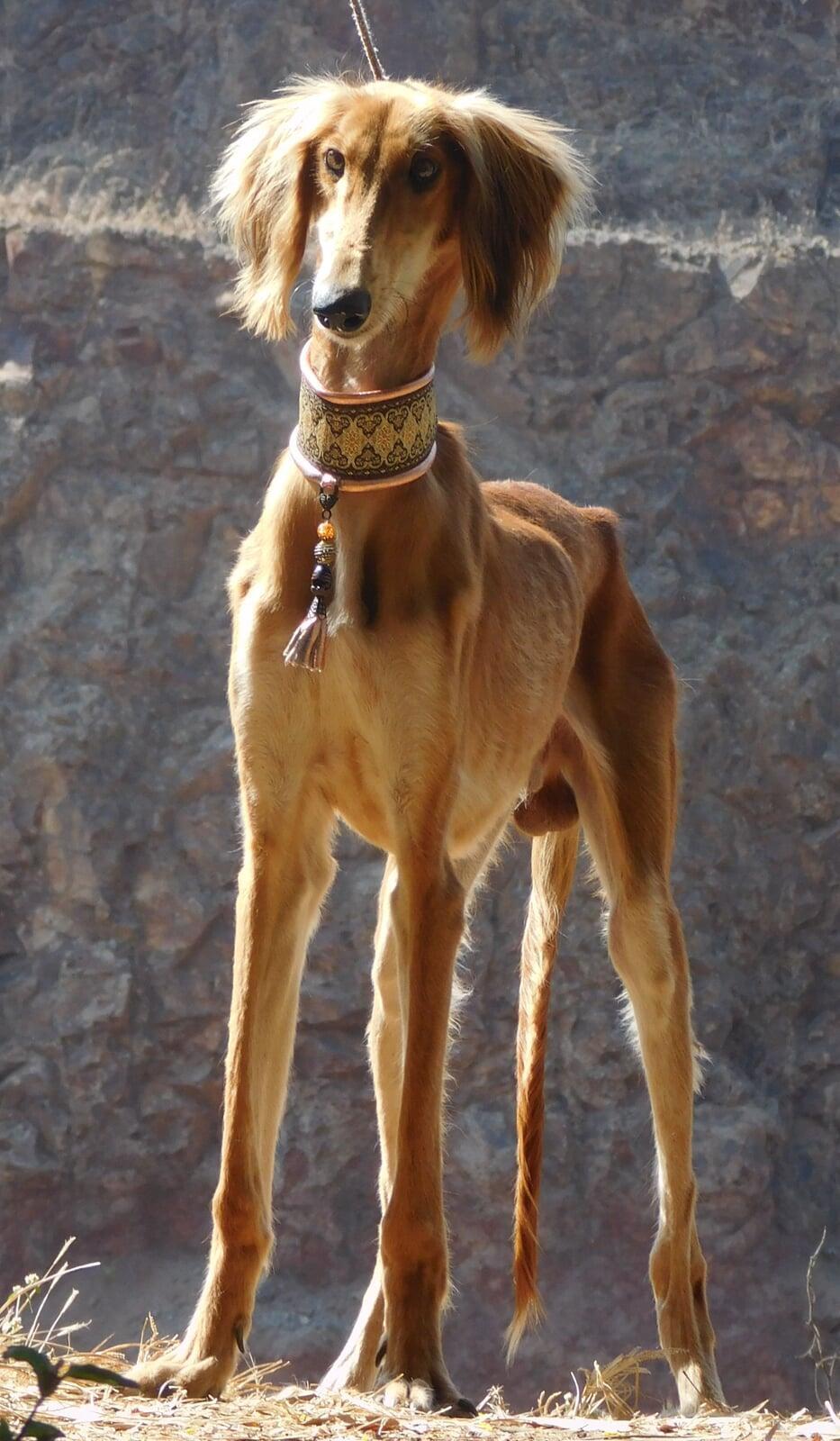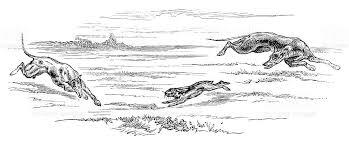The Pashmi - Indian Saluki

The term ‘Pashmi’ means furry or soft. It is used for two types of dogs in Maharashtra. The Aboriginal Afghan hound pattern sight hound is addressed by the term ‘Janval-Pashmi’. The Saluki of Indian origin is called simply as ‘Pashmi’. I will be writing about the Janval-Pashmi soon but this is about the standard Pashmi i.e. the INDIAN SALUKI. By the definition of the term ‘Breed’, it depends on the phenotype of the specimen irrespective of the genotype. The Houndsmen will certainly trace the resemblance of the Indian Pashmi to the Saluki. The Pashmi looks like one with a few differences as favored by the native houndsman. To prove the fact better, an Indian origin Pashmi bitch with no traceable international relation won a desertbred show among the participating international Salukis. Many Pashmis have completed their championship titles in India participating among the other Saluki. To discuss the origin of this INDIAN Saluki would be easy. By the trivial logic, the travelers from various countries [mostly the ones with a desert] had got dogs along with them and they propagated adapting to the habitat .The desert they have is unforgiving and uncultivable. Mankind or any fauna flourishes in the conducive environment. If it’s a barren desert, how would it sustain and propagate the human? Let alone a domestic dog who would add up to the already meager food source. Whereas there are regions in Maharashtra which are comparatively dry and hot but cultivable and hence had better flourished societies. Absolutely propitious to feed the hound but also provide a dry hot gameland to hunt upon and develop dogs upon their skills. India has always been most giving and an open vault for all the plunderers and rulers in the history. Doesn’t it look more fitting that the invaders also took away the hounds from India, bred them in their countries and generations later got them back to India. Food for thought!
Every genepool of a desert bred working animal in its native format and habitat is important and needs to be preserved as is without disturbing the specific preference of the characteristics. There are varying patterns of Saluki all over the globe may be due to evolution or the preference.
There are two patterns the Pashmi [Indian saluki] can be differentiated into. The preference of the ones who wanted a grand Indian dog for guarding purpose primarily made the big pattern of the Pashmi .These dogs have been recorded up to 34 inches tall and equally grand. They have good feathering over the ear ,tail and hair all over the torso like the international Saluki. These were extravagant dogs to behold. This group of Big Pashmi fanatics bred for size and fur. The head were comparatively small in proportion to the huge body with respect to that of the International Saluki. Their ears appear longer not due to the fur but the ear leather itself being longer. Pashmis have always been appreciated primarily for their exotic heads. Simply put, these were the bigger version to the international Saluki but with a temperament fit for guarding and beautiful small heads. A grand Saluki.
The other pattern of Pashmi was developed for the chasing and hunting purpose. They were lean but tall up to 30 inch unlike the 28 inch Saluki. They are bred for the coursing ability over anything else. The head of this pattern would be the best Sight hound heads ever. Small between the ears and suitably long with a powerful muzzle. Their chests will reach the elbow in most cases giving better space for lung and heart play .It is necessary for the endurance chases it does in the hot sun and rough terrain. The temperament is observed to be rough as they have to guard their master’s property after the hunt. They are used to chase and kill Black buck, deer, fox, wolf, hare, etc. This is the dog for the bigger games which needs longer chases like the deer. This is a working dog and catches dirt in is fur which might lead to tangles .Hence the fur though however good lt looks creates a nuisance so may be due to selection of the nature, the fur on this dog won’t be as long as the international show saluki. The owners cut trim ear and tail fur to avoid discomfort to the dog. Even if a dog has a decent fur, he isn’t maintained giving any special attention so as the fur to stay. A ring on the tail is not appreciated though it s found. Brindles of all sorts are disqualified. Partially or unpigmented pink noses, feet pad are disqualified.
